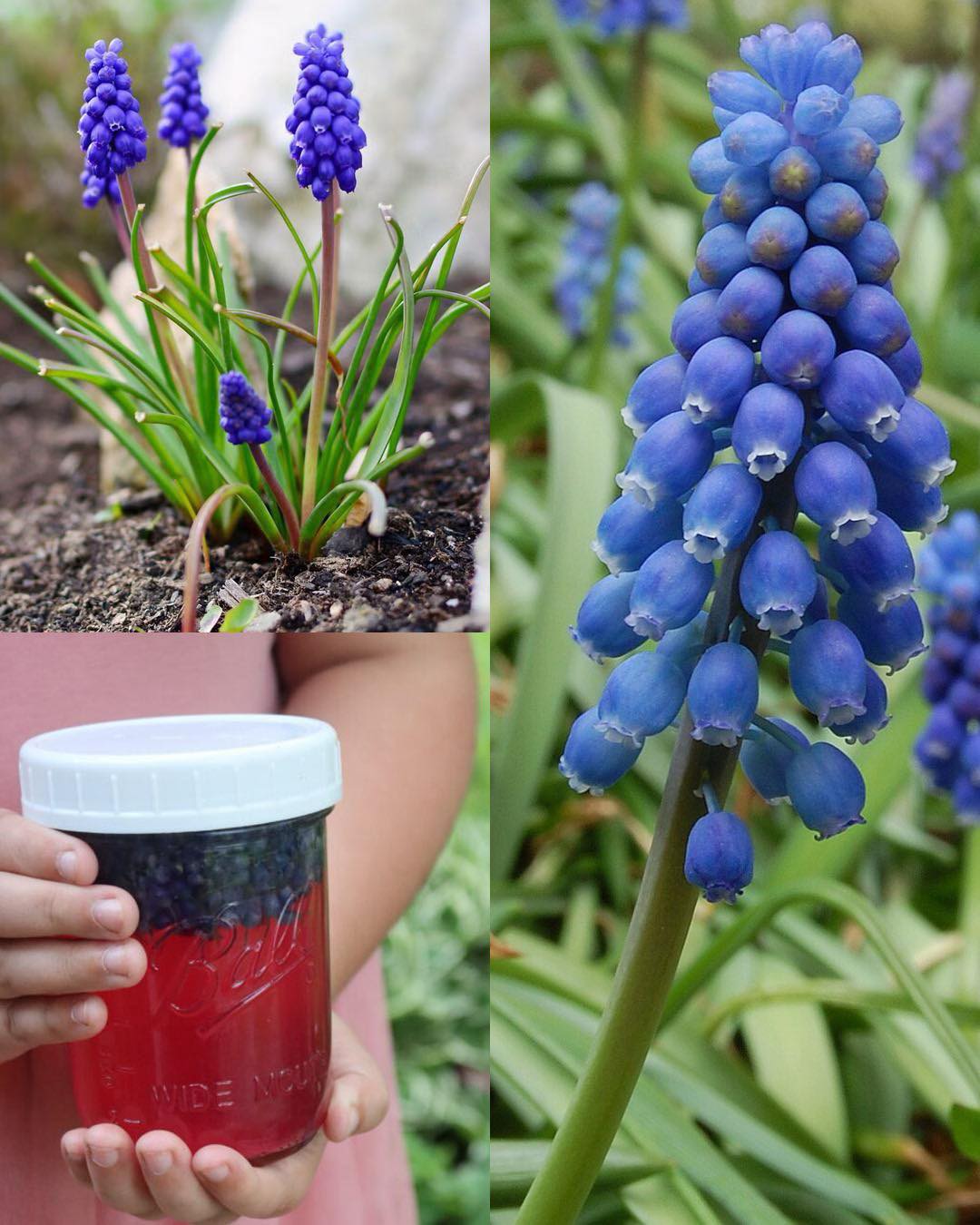Grape Hyacinth (Muscari): A Guide to Edible Varieties & Their Uses
Grape hyacinths (Muscari spp.) are beloved for their vibrant spring blooms, but few realize that some species are edible and even medicinal—while others can be toxic. This guide covers:
✅ Which Muscari species are safe to eat (and which to avoid)
✅ 10 health benefits of edible grape hyacinths
✅ 7 delicious ways to use them (teas, syrups, garnishes)
⚠️ Critical safety tips (toxic look-alikes, proper preparation)
Not All Grape Hyacinths Are Edible
While some Muscari species are edible, others contain toxic compounds that cause nausea, vomiting, or diarrhea. Key distinctions:
✅ Safe-to-Eat Varieties
- Muscari neglectum (Starch Grape Hyacinth)
- Used traditionally in Mediterranean cooking; bulbs are boiled or pickled .
- Flowers are edible but bitter unless cooked .
- Muscari comosum (Tassel Hyacinth)
- Bulbs are a delicacy in Italy (lampascioni), often preserved in oil .
- Requires boiling to remove bitterness from saponins .
- Muscari botryoides (Common Grape Hyacinth)
- Flowers can be pickled or used in salads .
❌ Toxic Varieties
- Muscari armeniacum (Armenian Grape Hyacinth) – Causes gastrointestinal distress .
- Hyacinthus orientalis (Garden Hyacinth) – Contains calcium oxalate, harmful if ingested .
Key Identification Tips:
- Edible Muscari have small, clustered blue/purple flowers and grassy leaves.
- Toxic look-alikes (e.g., Hyacinthus) often have larger, more fragrant blooms .
10 Benefits of Edible Grape Hyacinths
- Rich in Antioxidants – Flowers contain vitamins A and C, combating oxidative stress .
- Anti-Inflammatory – Traditional remedy for joint pain and skin irritation .
- Digestive Aid – Infusions may ease bloating (used in folk medicine) .
- Immune Support – Vitamin C content helps boost defenses .
- Respiratory Relief – Flower tea soothes coughs and congestion .
- Natural Dye – Deep blue pigments color syrups, jellies, and cosmetics .
- Skin Soothing – Baths with flowers may calm eczema or rashes .
- Mild Diuretic – Promotes detoxification in traditional use .
- Aromatherapy – Scent has a calming effect (used in perfumes) .
- Culinary Beauty – Edible flowers elevate salads, desserts, and cocktails .
How to Use Edible Muscari Safely
1. Pickled Bulbs (Lampascioni)
- Boil bulbs 2–3 times, changing water to reduce bitterness .
- Preserve in olive oil, vinegar, or salt (Italian tradition) .
2. Floral Syrup
- Steep flowers in hot water, strain, and simmer with sugar. Use in mocktails or desserts .
3. Herbal Tea
- Dry flowers and steep for a mild, floral infusion (add honey for sweetness) .
4. Edible Garnish
- Fresh flowers add color to cheese plates or cakes (ensure no pesticides) .
5. Hyacinth Honey
- Infuse raw honey with dried flowers for a unique floral flavor .
6. Bath Soak
- Place dried flowers in a muslin bag for a relaxing, skin-nourishing soak .
7. Cocktail Ice Cubes
- Freeze flowers in ice for decorative drinks .
⚠️ Critical Safety Tips
- Never eat raw bulbs – Always boil or pickle to neutralize saponins .
- Avoid roadside plants – May be contaminated with pollutants .
- Wear gloves when handling bulbs – Some cause skin irritation .
- Consult a doctor if pregnant, nursing, or on medication .
Final Thoughts
Edible grape hyacinths (Muscari neglectum, M. comosum) offer culinary and wellness potential, but proper identification and preparation are crucial. Stick to cooked preparations, avoid toxic varieties, and enjoy their floral beauty safely.
Want a printable foraging guide? Let me know—I’d be happy to create one! 🌿
Have you tried edible Muscari? Share your experiences below!
